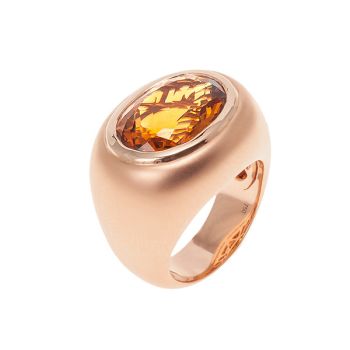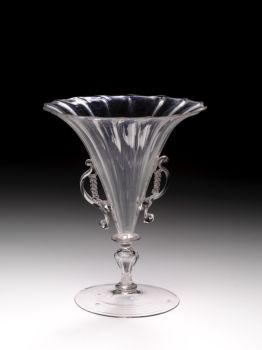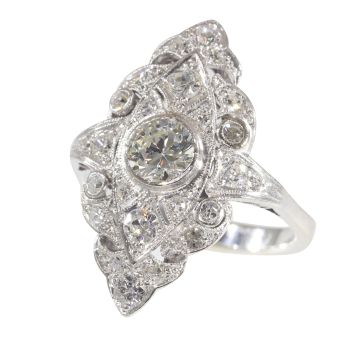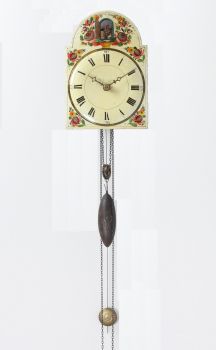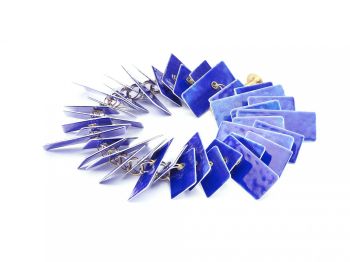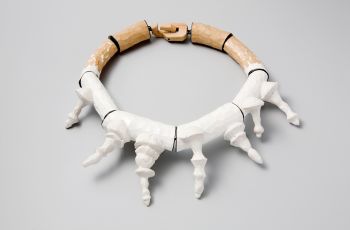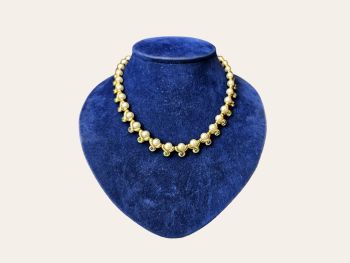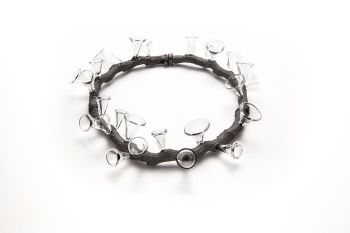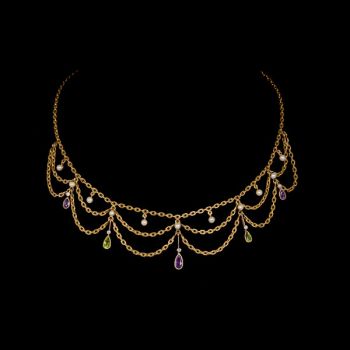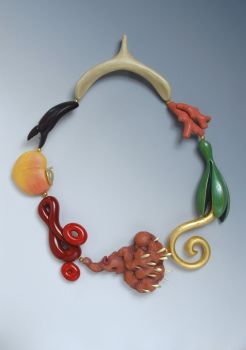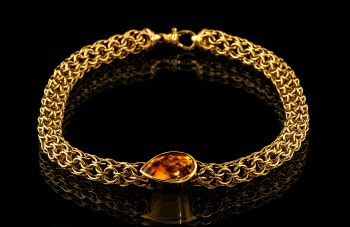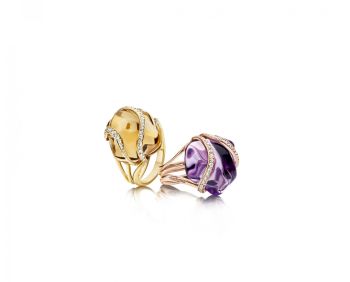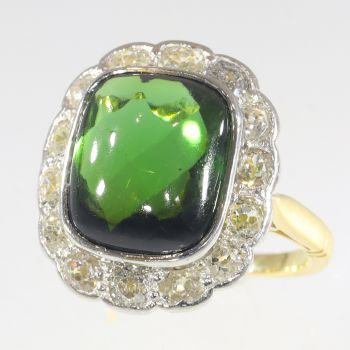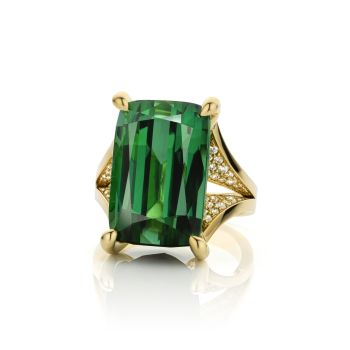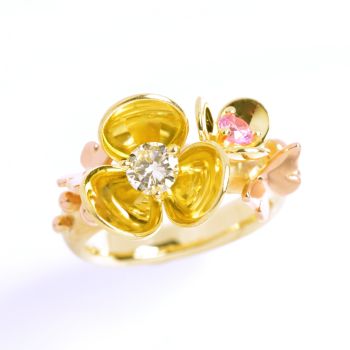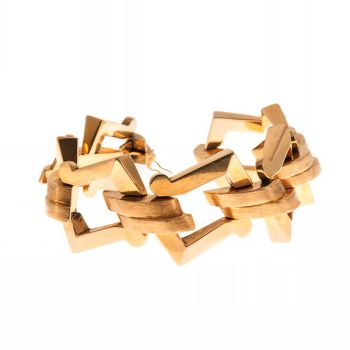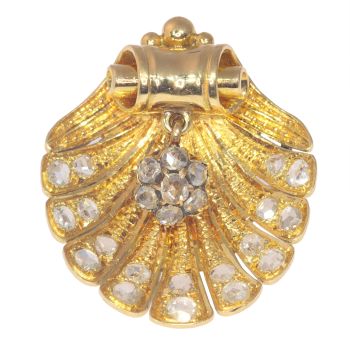Antique necklace gold cannetille filigree work with 15 big citrine stones 1820
Unknown artist
CitrineFiligreeGoldGemstone
€ 21.000
Adin Fine Antique Jewellery
- About the artwork
This fiery 18K yellow gold Georgian necklace of cannetille work folds around your neck as a gentle swirling summer breeze. Every of these 15 degrading rectangular cut citrines gleam out of their granule topped setting fused on a scintillating corona offiligree, entirely composed with tendrils, scrolls, granules and spirals. Although this delicate necklace looks as ethereal as lace, still how clear it is that it will never loose its glory and it will keep on outstanding the test of time.
Antique jewelry object group: necklace
Condition: excellent condition
- (more info on our condition scale)
Country of origin:Although it does not carry any legible control marks we believe this to be of French origin.
Style: Georgian - Georgian style is the name given in most English-speaking countries to the set of styles current between 1720 and 1840. It is eponymous for the first four British monarchs of the House of Hanover—George I of Great Britain, George II of GreatBritain, George III of the United Kingdom, and George IV of the United Kingdom—who reigned in continuous succession from August 1714 to June 1830.
- See also: Georgianor more info on styles
Period: ca. 1820
- (events and facts in 1820)
Material: 18K yellow gold
- (more info on precious metals)
Technique: Filigree (formerly written filigrann or filigrane) is a delicate kind of jewel work made with twisted threads usually of gold and silver or stitching of the same curving motifs. It often suggests lace and French from 1660 to the late 19th century. Itshould not be confused with ajoure jewellery work; while both have many open areas, filigree involves threads being soldered together to form an object and ajoure involves holes being punched, drilled, or cut through an existing piece of metal. (from: Wikipedia)
cannetille: This specific filigree technique, which is the technique of twisting or plaiting a thin gold wire into refined motifs, was popular in traditional Spanish and Portuguese jewellery. It became hugely popular in London and Paris in the 1830’s.
Precious stones: 15 citrines
- (more info on precious stones)
Birthstones: Citrine is the birthstone (or month stone) for November.
- (more info on birthstones)
Hallmarks: No trace.
- (more info on hallmarks)
Dimensions: length 46,50 cm (18,31 inch)
Weight: 72,00 gram (46,30 dwt)
Reference Nº: 14171-0037
Copyright photography: Adin, fine antique jewelry
- About the artist
It might happen that an artist or maker is unknown.
Some works are not to be determined by whom it is made or it is made by (a group of) craftsmen. Examples are statues from the Ancient Time, furniture, mirroirs, or signatures that are not clear or readible but as well some works are not signed at all.
As well you can find the following description:
•“Attributed to ….” In their opinion probably a work by the artist, at least in part
•“Studio of ….” or “Workshop of” In their opinion a work executed in the studio or workshop of the artist, possibly under his supervision
•“Circle of ….” In their opinion a work of the period of the artist showing his influence, closely associated with the artist but not necessarily his pupil
•“Style of ….” or “Follower of ….” In their opinion a work executed in the artist’s style but not necessarily by a pupil; may be contemporary or nearly contemporary
•“Manner of ….” In their opinion a work in the style of the artist but of a later date
•“After ….” In their opinion a copy (of any date) of a work of the artist
•“Signed…”, “Dated….” or “Inscribed” In their opinion the work has been signed/dated/inscribed by the artist. The addition of a question mark indicates an element of doubt
•"With signature ….”, “With date ….”, “With inscription….” or “Bears signature/date/inscription” in their opinion the signature/ date/ inscription has been added by someone other than the artist
Are you interested in buying this artwork?
Related artworks
Unknown artist
Cristallo façon de Venise Drinking Glass1600 - 1650
Price on requestPeter Korf de Gidts - Antiquairs
1 - 4 / 12- 1 - 4 / 24
- 1 - 4 / 24
- 1 - 4 / 24
- 1 - 4 / 12















